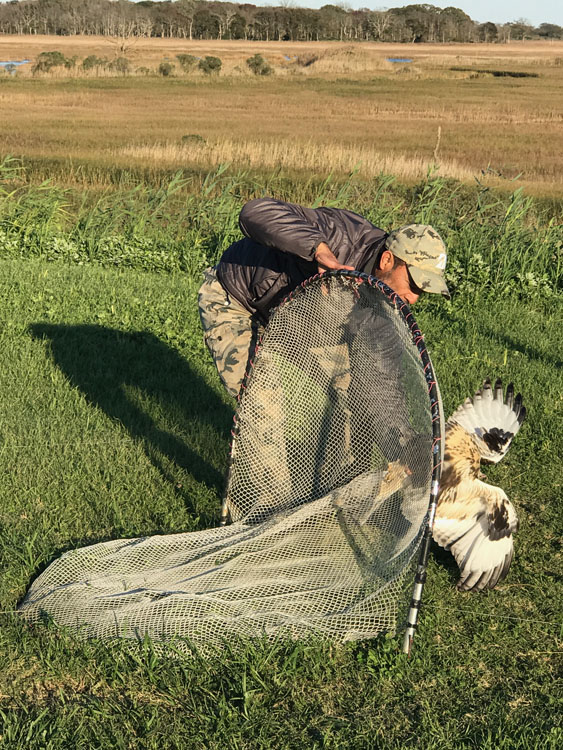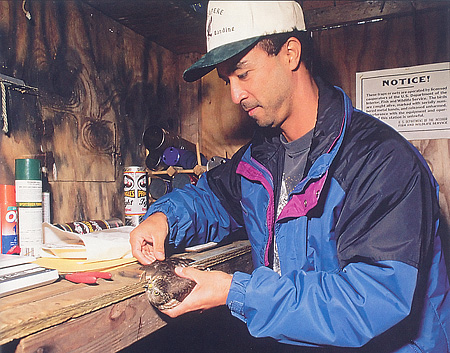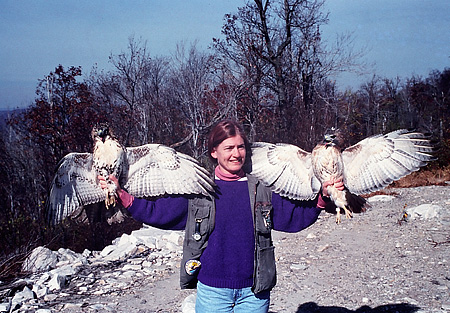raptor banding
Modern raptor banding (and all bird banding for that matter) is steeped in history and tradition dating back thousands of years. Many ancient cultures in the Middle East, Asia and Europe hunted with raptors, and hence, developed methods for their capture and training. Rocket nets, mechanical lures and modern materials not withstanding, most of the trapping techniques used today are little changed from those employed thousands of years ago to catch raptors for falconry and other birds for food or domestication.

Asides from the licensed falconer catching a passage raptor to train for hunting, most raptor trapping nowadays is for the explicit purpose of collecting biometrics and affixing unique identifying markings. Decades of data for most all avian species have been accumulated by scientists and volunteers and are collected in a large database archived and maintained at the Bird Banding Laboratory (BBL) in Laurel, Maryland. The data comprises information such as, species type, weight, sex, age, condition, location of capture/recovery, etc.


The raptor banding programs at Cape May Point and Kiptopeke are two of the longest, continuously operated projects on the east coast of North America. Up to five banding stations have been operated during a season at Cape May. The stations at Cape May are distributed about the southern-most tip of New Jersey in Cape May Point. At Cape Charles, two banding stations have been operated at Kiptopeke State Park and a station or two have been operated on Fisherman Island, at the southern-most tip of the Eastern Shore of Virginia. What Cape May Point and Kiptopeke have in common is the nature of their topographies. Both Cape May and Kiptopeke are located near the southern-most tips of peninsular regions along the Mid-Atlantic flyway. Hence, raptors migrating southward along the Atlantic coast eventually find themselves funneled into Cape May first, and then Kiptopeke later, before ultimately having to cross the Delaware and Chesapeake Bays, respectively. This results in a high concentration of raptors during the fall migration at these two locations and correspondingly effective raptor trapping and banding programs.
More Than You Ever Wanted to Know About Raptor Banding
- How a typical raptor banding station is set up
- What a typical raptor banding blind looks like
- How raptors are processed and banded
Other Useful Links
- Bird Banding Laboratory (BBL)
- Monitoring Avian Productivity and Survivorship (MAPS) Program
- Coastal Virginia Wildlife Observatory
- Mason Neck National Wildlife Refuge
- Mason Neck State Park
- Occoquan Bay National Wildlife Refuge
- Kiptopeke State Park